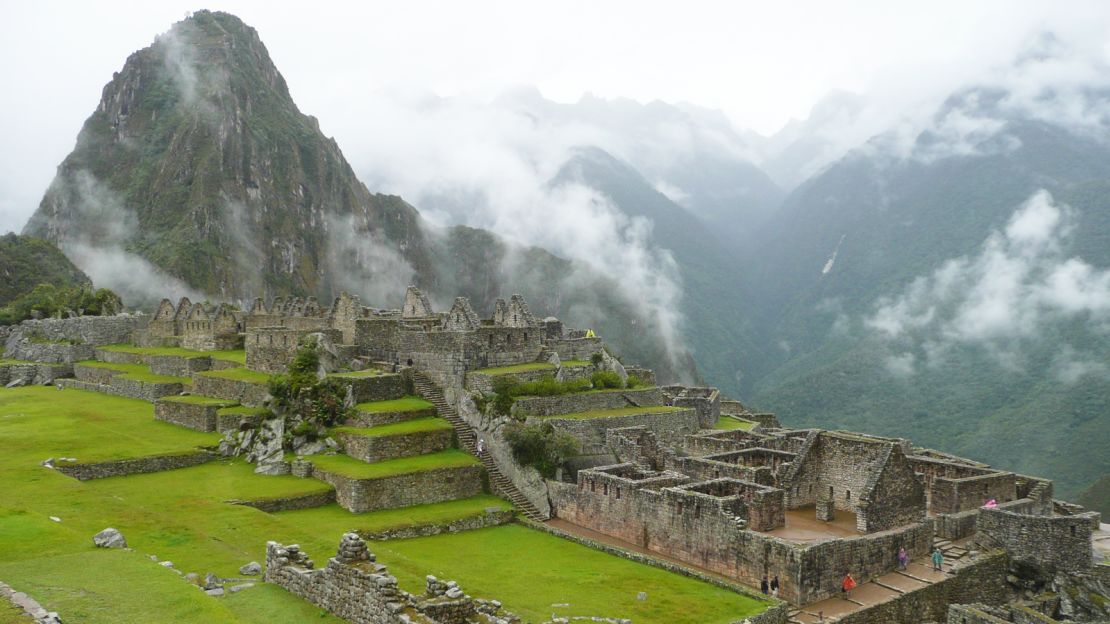The Inca designed Machu Picchu to be hard to reach and, for hundreds of years, the mountaintop citadel has been protected by the spectacular peaks and gorges which encircle its ancient fortifications.
Now, however, work has begun on a new international airport, according to a Peruvian government statement, which will make the ruins more accessible than ever. And the project has sparked opposition from those concerned about the impact on the surrounding landscape, known as the Sacred Valley.
The new travel facility is to be built at Chinchero, at the mouth of the Sacred Valley, between Machu Picchu and the city of Cuzco – the current gateway to the Inca citadel.
Peruvian art historian Natalia Majluf started an online petition against the airport, claiming the project “endangers the conservation of one of the most important historical and archaeological sites in the world.”
Majluf told CNN that the petition refers to the Sacred Valley as a whole, not just Machu Picchu.
“You can’t take Machu Picchu out of its surroundings,” she said. “It’s all connected.”
The petition, signed by Peruvian and international academics as well as local residents, calls on the country’s president, Martin Vizcarra, to cancel the project.

“An airport in the surroundings of the Sacred Valley will affect the integrity of a complex Inca landscape and will cause irreparable damage due to noise, traffic and uncontrolled urbanization,” reads the petition.
Gabriela Ramos, a historian of the Andean region at the UK’s University of Cambridge and a signatory of the petition, told CNN that plans for the airport do not address important questions over its environmental impact.
“Where will the waste water go? Into nearby lakes?” she said. “There’s no plan as to how to deal with it.”
One lake near the proposed site, Laguna Piuray, is one of the main sources of water for nearby Cuzco.
The city has struggled to guarantee water supplies for decades and many neighborhoods still lack around-the-clock running water, according to Ramos, a problem that will be compounded by the development.
Ramos also cites studies which show the soils are unsuitable for building an airport.
“I’m perplexed as to why the plan is going ahead despite all of its problems,” she said. Additionally, the petition asserts that flights will be affected by the high altitude of the area, wind and weather conditions haven’t been studied, and the cost of construction is excessively high.
However Vizcarra insists that the airport is going ahead.
Speaking to reporters in Cuzco on May 23, the president said the necessary studies have been undertaken over a prolonged period of time.
“It’s not about what the authorities or civil servants say, it’s what the experts say,” he said.
“Over 15 years they have performed their evaluations and determined that this is the most suitable alternative. This is not an improvisation.”
The area is currently served by a small airport in Cuzco, but, set within the city, it’s not suitable for expansion.
According to current plans, the airport will be capable of handling larger planes from a wider variety of international destinations than the existing facility, and is designed to attract more tourists to the south of Peru.
While Vizcarra has promised the project will bring benefits to local communities, opponents warn that the airport will cause irreversible damage to the area’s archeological treasures.
It will destroy the system of Inca canals and ritual lines around Chinchero, according to the petition.
Beyond Chinchero itself, other sites could also be affected.
Machu Picchu is the star attraction in the area, but the Sacred Valley is also home to many other impressive sites.
Pisac, with its pre-Columbian agricultural terracing and hilltop Inca fortress; Moray, an amphitheater of concentric rings thought to have been used for agricultural experiments; and Ollantaytambo, a village which boasts two Inca ruins including a terraced fort, all compete for visitors’ attention.
“We would lose the most important cultural landscape in Peru,” said Majluf. “It was the heart of the Inca Empire.”
And overtourism is already a major issue at Machu Picchu, according to Sarah Miginiac, general manager for South America at adventure company G Adventures, who told CNN that the problem is too many people trying to gain access.
“There isn’t the infrastructure around it,” she said in a 2018 interview.
In response, new ticket rules were put in place at Machu Picchu starting January 1, 2019, limiting tourists to visiting at scheduled times.
Tickets are valid for up to four hours and re-entry is not usually allowed. Previously, visitors were allocated to either a “morning” or “afternoon” slot.



















